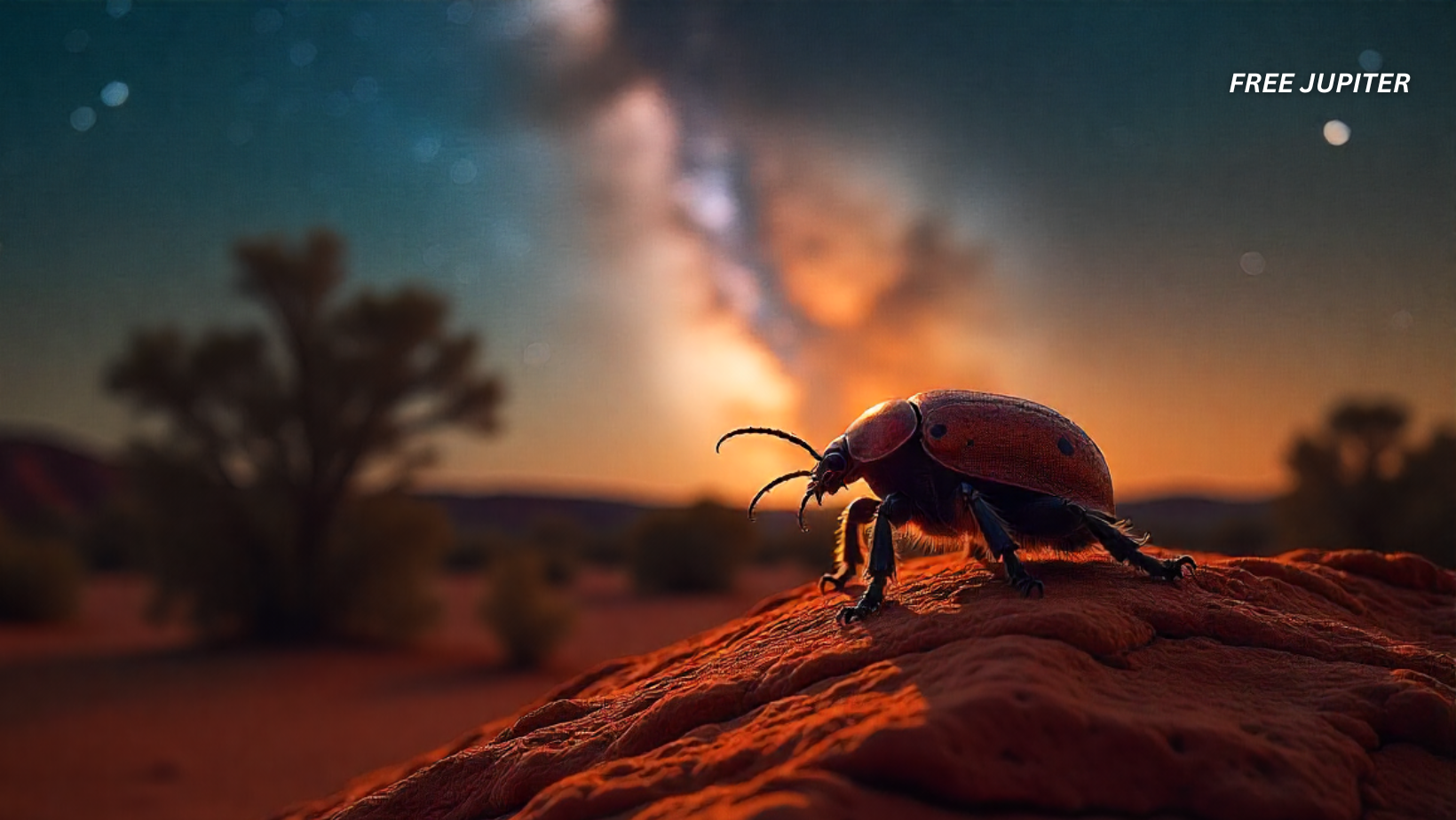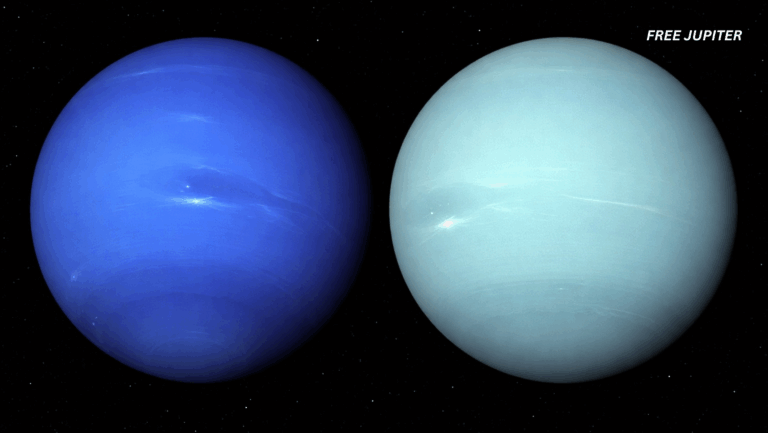Friendly Note: FreeJupiter.com shares general info for curious minds 🌟 Please fact-check all claims—and always check health matters with a professional 💙
It’s not every day you hear about dung and the Milky Way in the same sentence. But in the oddest and most fascinating twist of nature, it turns out that a tiny insect known for rolling balls of poop is taking its navigational cues from the stars. Yes—dung beetles are now officially the first insects discovered to use the Milky Way galaxy as a cosmic compass.
Not bad for a creature that spends most of its life pushing excrement across the ground.
How This All Started: A Cosmic Mystery Rooted in Poop
At first glance, dung beetles don’t seem like the kind of creatures you’d associate with space science. They’re mostly seen scurrying around manure piles, collecting dung, and rolling it away in near-perfect straight lines. But this very behavior—rolling in straight lines—raised a cosmic question among researchers.
Why straight lines? And more importantly—how do they manage to keep a straight path, especially at night?
Scientists have long known that birds and marine mammals use the Sun, Moon, stars, and even Earth’s magnetic field to find their way across vast distances. But for insects, the idea of celestial navigation seemed like a stretch. Until, that is, researchers decided to put dung beetles to the test.
Read more: New Study Finds Tortoises Exhibit Emotions Similar to The Way Humans Do
Bringing the Stars Indoors: Testing Beetle Navigation
To investigate how these beetles manage their uncanny straight-line rolling, a research team from Lund University in Sweden and the University of the Witwatersrand in South Africa took their curiosity to a planetarium. That’s right—they brought dung beetles into a dome where the night sky can be completely controlled and simulated.
Inside the planetarium, the team recreated various versions of the night sky: some with the Moon, some with just stars, and some with the full splendor of the Milky Way stretched across the dome like a glowing band of cosmic highway.
What they found was astonishing. When the Milky Way was projected overhead, the dung beetles confidently rolled their dung balls in steady, straight lines. When the Milky Way was removed or dimmed, the beetles lost their way, zigzagged around, and veered off course.
In other words, they needed the glow of the galaxy to steer straight.
Beetle Vision: Not as Basic as We Thought
Now, here’s where things get even more impressive. Dung beetles don’t have high-resolution eyes. Unlike humans, they don’t see sharp images or detailed star patterns. Their compound eyes consist of many tiny lenses that specialize in detecting contrast and movement rather than clarity.
But that’s all they need. What they’re picking up isn’t specific constellations—it’s the gradient of light created by the Milky Way. The brighter band of the galaxy stands out against the darker sky, and that contrast seems to be just enough for the beetles to lock onto a direction.
They’re not reading maps or following Orion’s Belt. They’re simply sensing a celestial glow—and turning it into a reliable road sign.
So, Why Do They Roll Poop in a Straight Line Anyway?
In the wild, dung piles are like open buffets for insects. But competition is fierce. Once a beetle finds a fresh pile, it grabs what it can, forms it into a ball, and rolls it away from the chaotic crowd. The faster it gets that dung to safety, the better its chances of keeping it.
Rolling in a straight line helps the beetle maximize speed and avoid circles. If it wandered aimlessly, another beetle might snatch its precious ball of dung.
This straight-line strategy isn’t just random—it’s survival. And the Milky Way helps make it possible.
Read more: Scientists Say More Animals Are Conscious Than We Ever Imagined—Even Insects
Stars and Animals: A Long (and Starry) History
Dung beetles might be the first insects we know of to use the Milky Way, but they’re not alone in using the stars for guidance.
For instance:
- Birds, like the European robin, have long been known to use stars to navigate during migration. In experiments from the 1950s, robins placed in planetariums flew in the correct direction only when they could see a familiar night sky.
- Seals, whales, and even certain fish are believed to use celestial cues, though the research is still ongoing.
- Some species of moths and frogs also seem sensitive to the position of the Moon, using it to maintain direction at night.
What makes dung beetles unique is that they’re using the Milky Way’s glow, not individual stars or the Moon. They’re also not migrating thousands of miles—they’re simply trying to get dinner home before someone steals it.
And somehow, they’ve evolved a system just as sophisticated as migratory birds to do it.
The Bigger Picture: Why This Matters
Sure, it sounds like an amusing headline: “Beetles Use Milky Way to Roll Poop.” But this discovery has implications far beyond the insect world.
First, it’s a reminder that even tiny creatures with tiny brains can pull off astonishing feats. Their behavior is guided by a subtle understanding of their environment—one that scientists are only beginning to grasp.
Second, it raises red flags about light pollution. In cities and suburbs where artificial lights flood the night sky, the Milky Way is often no longer visible. That could spell trouble for beetles who depend on it.
If dung beetles can’t see the stars, they may struggle to escape dung piles efficiently. That could lead to more beetle-on-beetle conflict, slower cleanup of animal waste, and disruptions in the nutrient cycle—especially in ecosystems where beetles play a vital role.
Dung Beetles in a Star-Filled Ballet
The species studied, known as Scarabaeus satyrus, lives primarily in South Africa and is nocturnal. After sunset, these beetles get to work under a naturally dark sky—one still free of the overwhelming glow of city lights.
In their natural setting, they don’t just go about their task blindly. They perform what can only be described as a beetle-sized cosmic ballet, rolling their poop balls with astronomical precision under the stars.
And they even do a sort of orientation “dance” before heading off. Scientists observed that once the beetle collects its dung ball, it climbs on top, does a little spin—like a mini lookout—and checks the position of the sky before heading off in a straight line.
This momentary twirl may look comedic, but it’s actually a crucial step in locking in their route.
What Can We Learn From This?
This discovery reshapes our understanding of how perception and behavior work in the animal kingdom. It also underscores the importance of preserving natural darkness. If dung beetles are using cosmic cues, it’s likely other insects and small creatures might be doing the same.
Protecting dark skies isn’t just about stargazing. It’s about preserving invisible lifelines for species we rarely think about but desperately need—like beetles that clean up the wild so ecosystems don’t drown in waste.
Read more: Scientists Discover Animals Have a Mysterious ‘Sixth Sense’, Changing Evolutionary Theories
Final Thoughts: A Galaxy Worth Rolling Toward
Who would have thought that in the grand tapestry of space, a humble dung beetle would be one of the threads connecting us all?
Next time you look up at the stars, take a moment to consider that somewhere beneath that same sky, a beetle is pushing a dung ball in the right direction—not with a GPS, but with the Milky Way as its map.
In a world full of mystery and wonder, even poop can be poetic.










